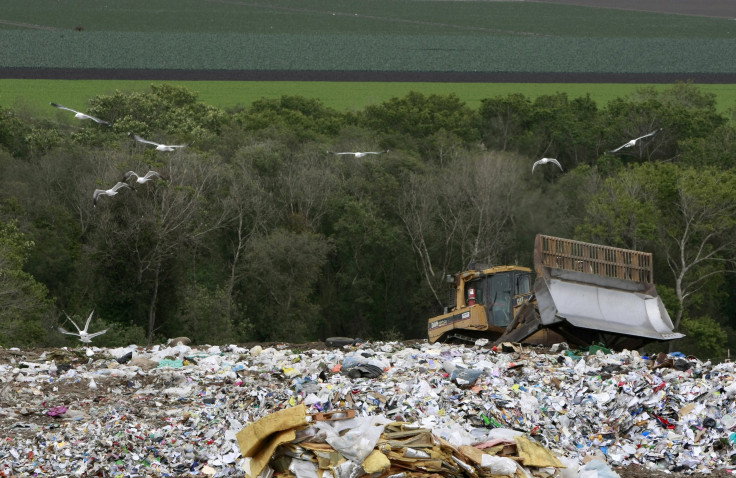Climate Change: US Landfill Methane Emissions Grossly Underestimated, Finds New Study

Landfills are the United States’ third-largest source of methane -- a potent greenhouse gas nearly 30 times more effective than carbon dioxide in trapping heat and spurring global warming. However, as a new study shows, this number might be much higher, as Americans are dumping more than twice as much trash in landfills as the U.S. Environmental Protection Agency (EPA) has estimated.
The Yale University study, which calculated the waste volume in more than 1,200 municipal landfills, revealed that in 2012, 262 million tons of solid waste was disposed of in the country -- a 115 percent increase over the EPA’s estimate of 122 million tons for the same year.
In other words, every American citizen dumped approximately 5 pounds of trash every day in the country’s landfills in 2012.
“I feel that it’s a superior number to previous estimates, and the key is that we can use our method every year going forward to more accurately track our progress towards more sustainable materials management,” Jon Powell, a Ph.D. student in Yale’s Department of Chemical & Environmental Engineering, said, in a statement released Monday.
The EPA relies on an indirect estimate to calculate the amount of waste in landfills -- based on information from industry associations, businesses, the U.S. Census, and the Department of Commerce. For the study, researchers relied on a more direct method -- basing their calculations on numbers reported by the landfill operators. This, according to the authors of the study, provided a degree of accuracy that was “previously unachievable.”
“I think the disposal rate and capacity numbers are interesting on their own, but I think in the bigger picture, it provides us a distinct, data-driven roadmap for where we can target emissions reductions in the waste sector,” Powell added.
Landfills currently account for 18 percent of America’s domestic methane emissions, with open landfills contributing 91 percent of this chunk. Despite this, the study -- which was aimed at calculating the efficiency of methane capture systems at landfills -- found that closed landfills were 17 percent more efficient at capturing the greenhouse gas.
“When a landfill reaches the end of its life, an engineered cap or barrier system is installed to seal off the waste material from the environment,” Powell told Climate Central. “Open landfills typically have some areas that are ‘closed’ in this manner, but also have areas that do not have permanent caps, and it is more difficult to extract methane and other gases that are generated in these areas.”
© Copyright IBTimes 2025. All rights reserved.






















